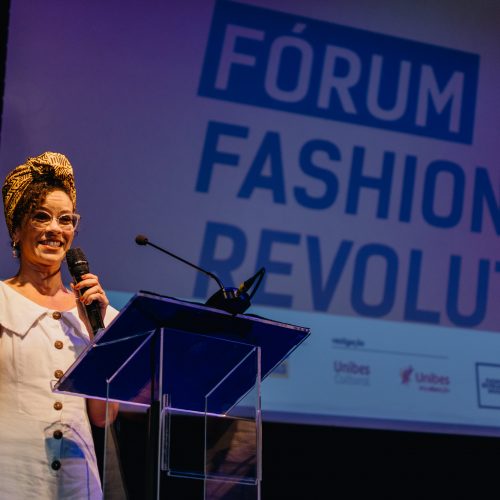The Benefits And Pitfalls Of Digital Fashion | Interview With Diane Wallinger
Diane Wallinger is an up-and-coming designer who has trained in both traditional and digital fashion design. During the 2020 pandemic, she released her debut digital collection, CARE OF SELF, CARE OF WORLD, which was also the final project of her MA Fashion Futures from The London College of Fashion. As a designer with a bright future ahead of her, we were eager to hear her thoughts on the benefits and pitfalls of digital fashion, as well as to learn about its potential to unlock environmental and human well-being.
To receive the Luxiders newsletter, sign up here.
What are the greatest benefits of digital fashion, particularly within your profession?
As a traditional fashion designer trained (and still training!) in digital fashion, for me the first obvious benefit of digital fashion is the time- and material-saving opportunities it represents, especially at the sampling stage. Usually a sample—the garment's prototype—would have to go through a lengthy iteration process, often travelling between the brand's head office in Europe or America and the production factory based in Asia or India, and this is repeated until the style is approved for production. This "method" represents a huge waste of time, but also an incredible waste of material for an item that might not even sell well in-store, and would have to go into sales before eventually being discarded. Digital fashion and digital fashion software like Clo3D enable designers to only use computer power to create a nearly perfect sample that might only require one physical iteration before approbation.
In the same way, the digitalisation of the fashion design process enables me to experiment freely, to "go crazy" with an idea, without producing any physical waste. The instant 3D visualisation of a design helps me to quickly decide if I want to discard or pursue a concept.
"With the click of a mouse, you can try another colour, texture or shape, whereas it would take numerous sketches and fabric experimentations before being able to make that same decision."
Finally, digital fashion has these elements of fun, creativity and freedom that, I feel, traditional fashion has lost. Maybe it's because, to me, fashion's aura has sort of begun to fade, as the ethical and environmental scandals unfold. The traditional fashion system sometimes feels so wrong that it is refreshing and nice to try something else. And that is why I'm a bit afraid of fashion NFTs and their ecological impact; I would not like digital fashion to make the same mistakes as its traditional counterpart. But that's another, huge topic!
Where do you see the potential of digital fashion going? Can its principles benefit any other professional sectors within or even outside of fashion?
I must say that digital fashion is still new to me and that sometimes I am not 100% sure of where it is heading. It surely represents one of the futures of fashion, but its form is yet to be determined. In the short term, I believe that platforms like DressX will become more mainstream, with a growing number of people using such digital dressing services to wear something crazy and unusual, just for a picture. Indeed, our digital identity (or identities!) are becoming increasingly important and we can now define our digital selves and dress them, like we used to create an avatar in the Sims. I don’t know if it is the influence of gaming, or if it is our digital life merging into a game. Here I am thinking of social platforms, which are already a sort of game, where you play a persona that is an improved version of your physical self. And this phenomenon has been accentuated, or maybe just revealed, by the pandemic.
Otherwise, the principles of digital fashion, the idea that something can be created and exist entirely and only digitally, could be applied to the accessory, jewellery and watchmaking sectors. In the same way that a fashion campaign can be realised only with computers, jewellery or bag advertisements could be digitally rendered rather than shot by a photographer in a physical studio—if that’s not already the case!
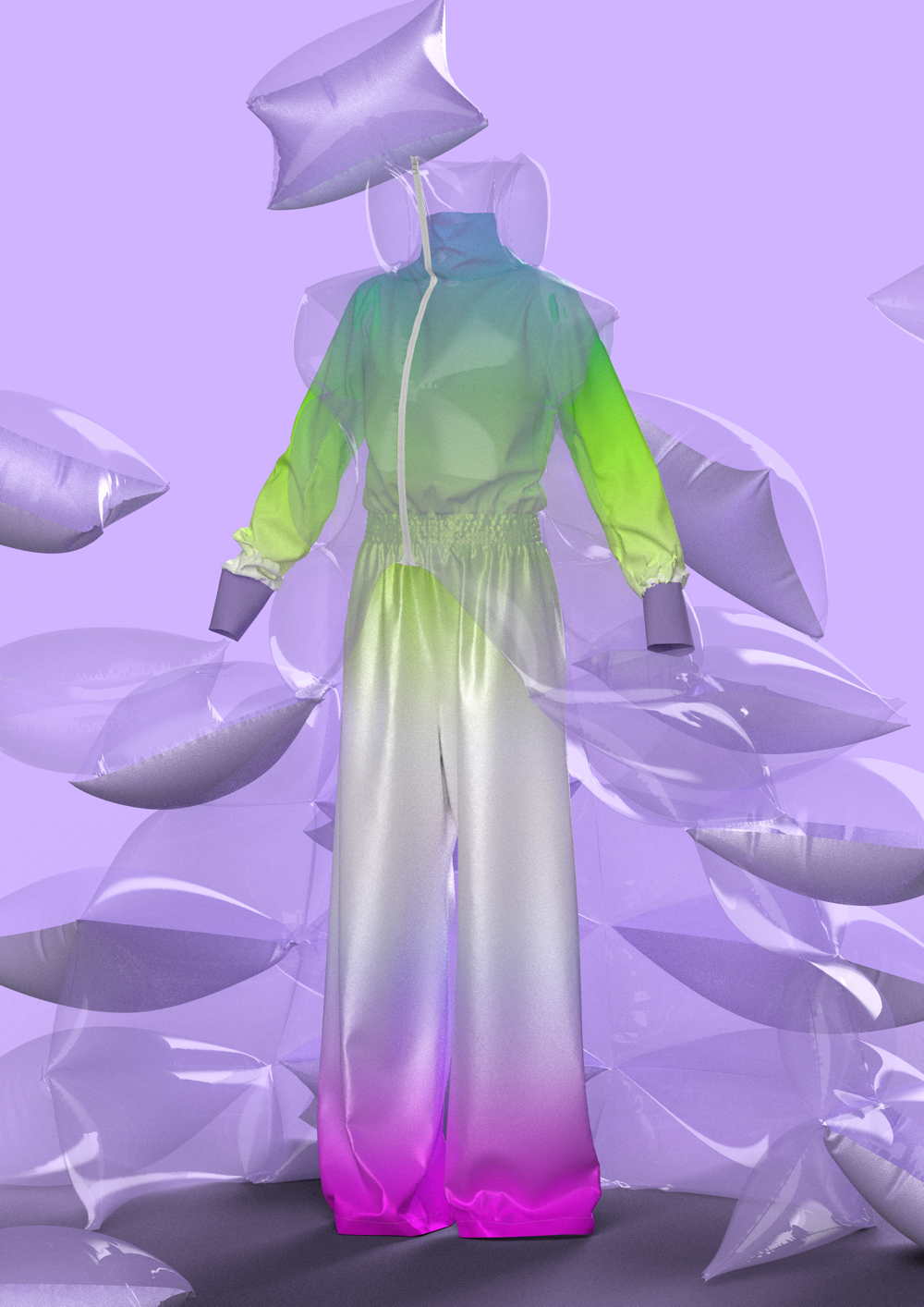
©Diane Wallinger
What do you think is the most promising path right now towards a more sustainable fashion industry?
I don’t think that there is only one path, and that is also what defines sustainability. The fashion industry used to be a “one-way” industry, and that is what made it unsustainable environmentally but also ethically. There used to be one way of producing, one way of promoting, even one way of wearing. Brands that did not respect the rules would die or struggle to exist, going against the flow. To become more sustainable, the fashion industry needs to change at all levels and become multiple, offering diverse ways of making, presenting, owning and enjoying. So, to me, there isn’t only one path to the sector’s sustainability—there are plenty. And we see them emerging already! Of course, digital fashion is one of them. But, considering that we might still need to wear physical garments for a bit, I consider thrift shopping, mending and repairing, loaning and buying from small, local sustainable brands as being among the many cool and sustainable options readily available to consumers.
I wouldn’t say that transitioning to sustainability is more complicated for designers, but I think that it is more challenging because we, speaking as a designer, have to change the way we do what we do. Our thinking has to change, our whole way of designing fashion. But, again, there are multiple paths. One can decide to design with selected materials, for example recycled or discarded; for specific users; or using a particular technique, such as zero-waste pattern cutting or collaborative design. There are many existing opportunities for designers to create for sustainability, and many more to discover. I chose the path of design for environmental and human well-being; we will see where it leads me!
Is needed to push the digital fashion movement more into the mainstream? Do you want digital fashion to become more mainstream?
As I mentioned earlier, I believe that digital fashion platforms like DressX will become more mainstream as our digital personas take up increasing space in our lives. This was already accelerated by the pandemic, during which our virtual selves were going out, while we had to stay in (!). I think that there is still a lack of understanding of digital fashion for it to fully become mainstream—it's still very niche. But I'm wondering what would happen if a big high-street label would propose part of its collection digitally, or virtual versions of physical items. Would it be adopted by consumers? I don’t know, but it would surely raise awareness of the technology.
I don’t think it’s a problem if digital fashion becomes more mainstream, or at least I don't see this as an issue. I believe that the simple fact that it is, well, digital, makes it more accessible and that it should be. This is another difference compared to the traditional fashion world where exclusivity is acclaimed. This is why I am not a big fan of fashion NFTs, which celebrate the idea of drops and limitedness again. Other than that, I think that it would be quite cool to see more people wearing digital fashion (in an image), and even more so if this replaces the purchase of a physical item that would have only been worn for a picture.
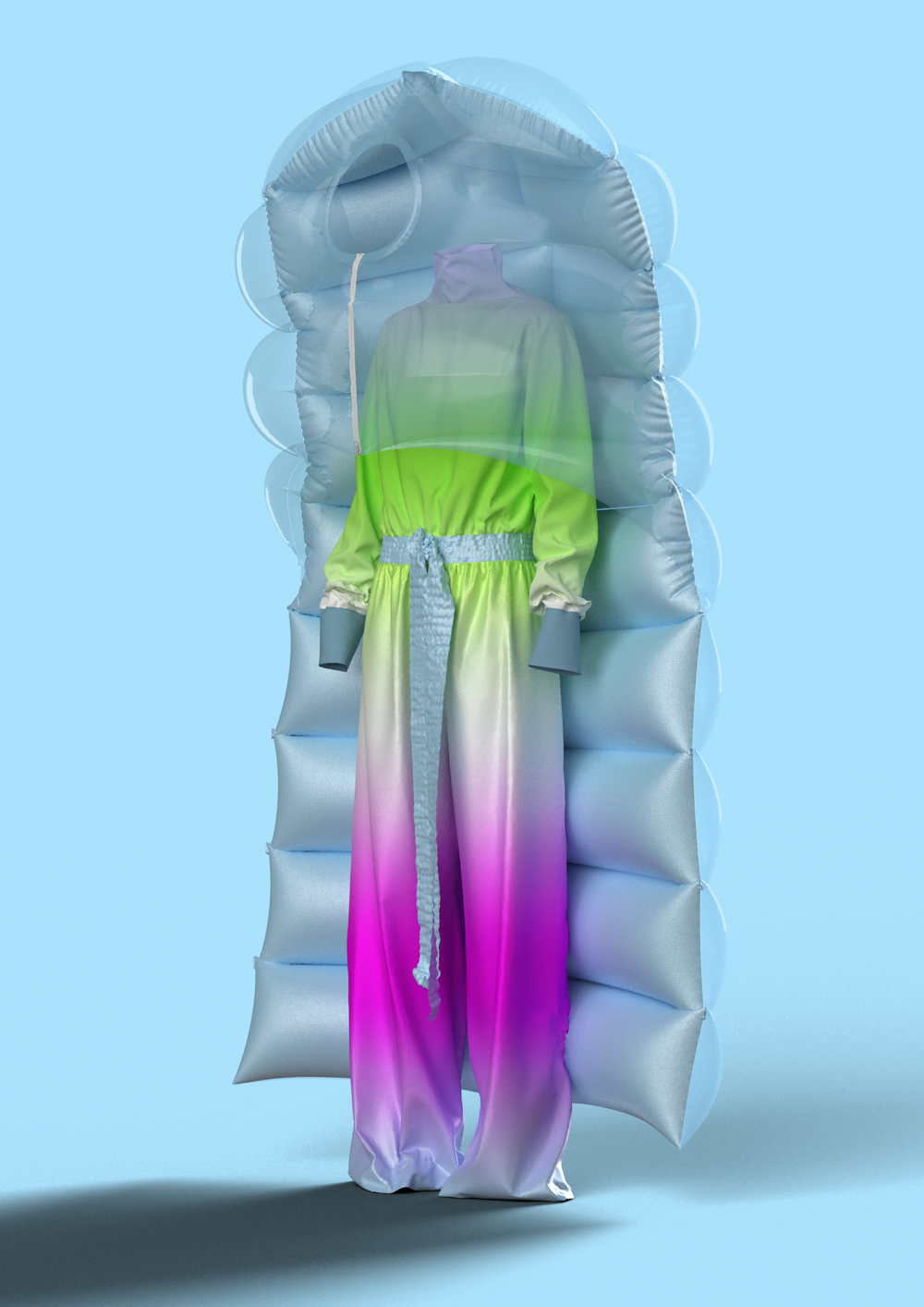
©Diane Wallinger
What are you more excited about for the future of digital fashion and where do you see it headed?
I must say that I find everything digital fashion–related super exciting at the moment! It is an exciting sector in and of itself. As my work explores garments' impacts on environmental and human well-being, I really would like to investigate the potential benefits of digital fashion. I feel like we don't normally associate virtuality with well-being or happiness and there is this idea that clothing needs to be physical to impact our emotions and feelings.
"I want to see what digital fashion can do and what positive impact it can have on us; the perspective of this investigation and its findings gets me really excited!"
What made you decide to pursue a career in digital design rather than designing in the more traditional sense?
Well, I haven’t decided yet if I want to remain a digital-only designer! I went into digital fashion because it felt more playful, free and like it enabled greater creativity. Besides, as I said earlier, it has that sparkle, that feeling of excitement and innovation that, to me, traditional fashion had lost. Digital fashion is also something I am discovering, an unseen territory, and in some way, exploring this area feels like I’m pursuing my education. I studied fashion design, fashion communication and fashion futures, and digital fashion seemed like the logical next step. I see my investigation of digital fashion as further learning rather than a determined career path. I want to pursue this area for a bit, but that doesn't mean that I reject physical or traditional fashion design. On the side of my digital work, I still use more traditional fashion design techniques to create stuff for me or my friends, sometimes mixing methods from the two worlds. Indeed, phygitality, the crossroad between physicality and digitality, is another thing I'm interested in, and truly excited about (!). I think that both dimensions could benefit from interacting with one another and that this relationship could result in entirely new experiences for consumers. Again, I’m imagining what could be the benefits on human well-being because this is my research topic of choice, but the impact could be equally positive for the planet.
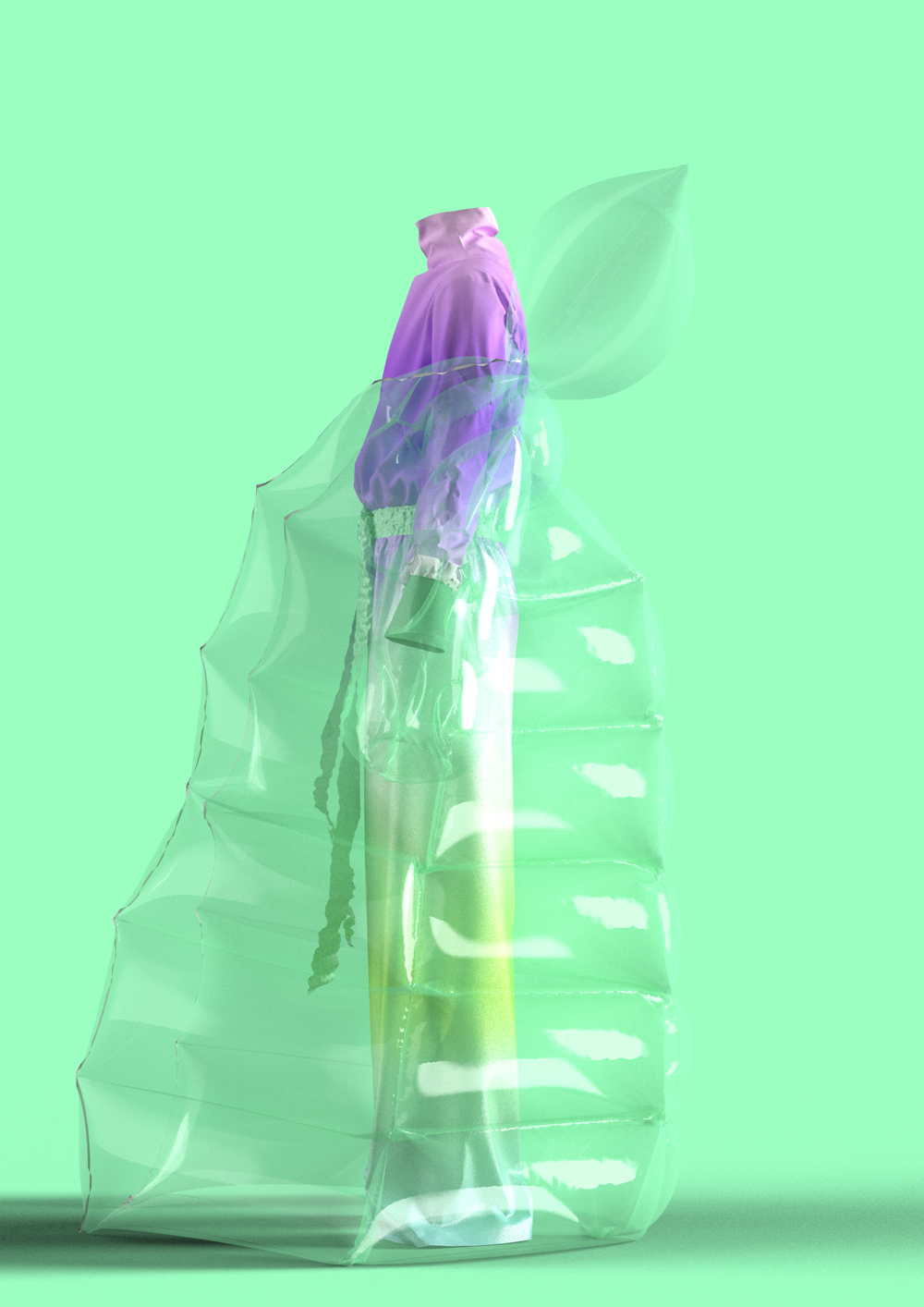
©Diane Wallinger
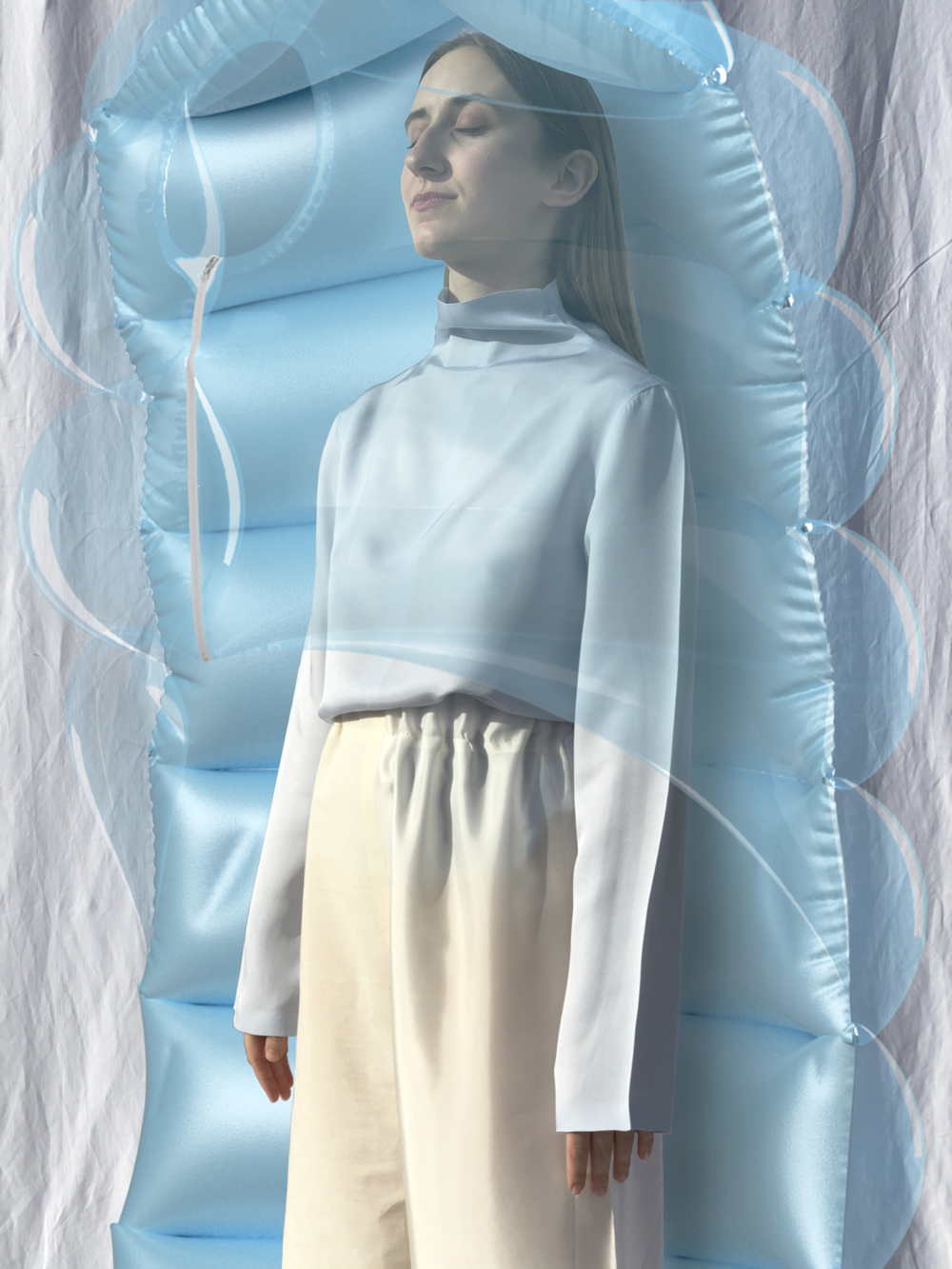
©Diane Wallinger
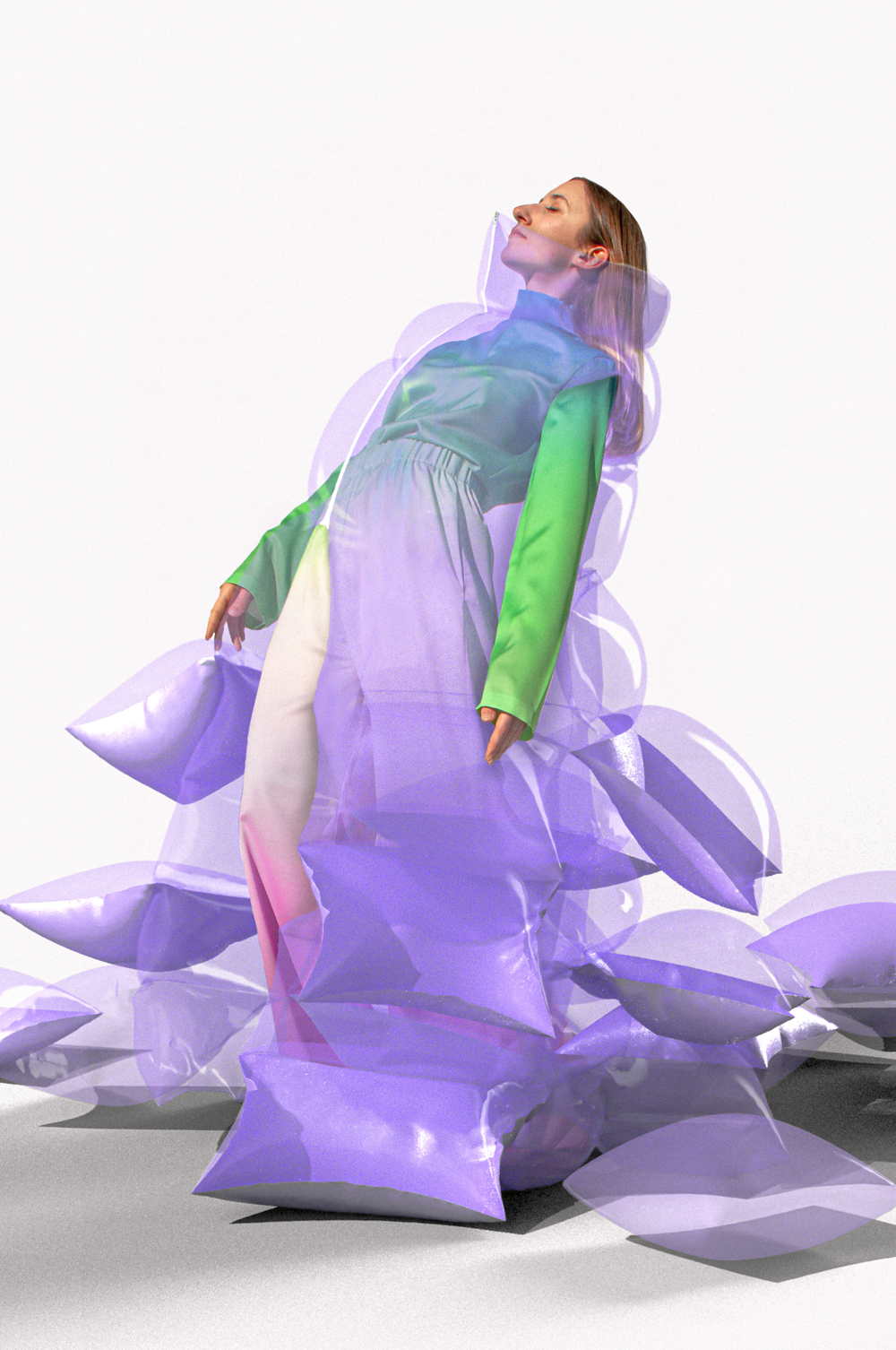
©Megane Hilpertshauser
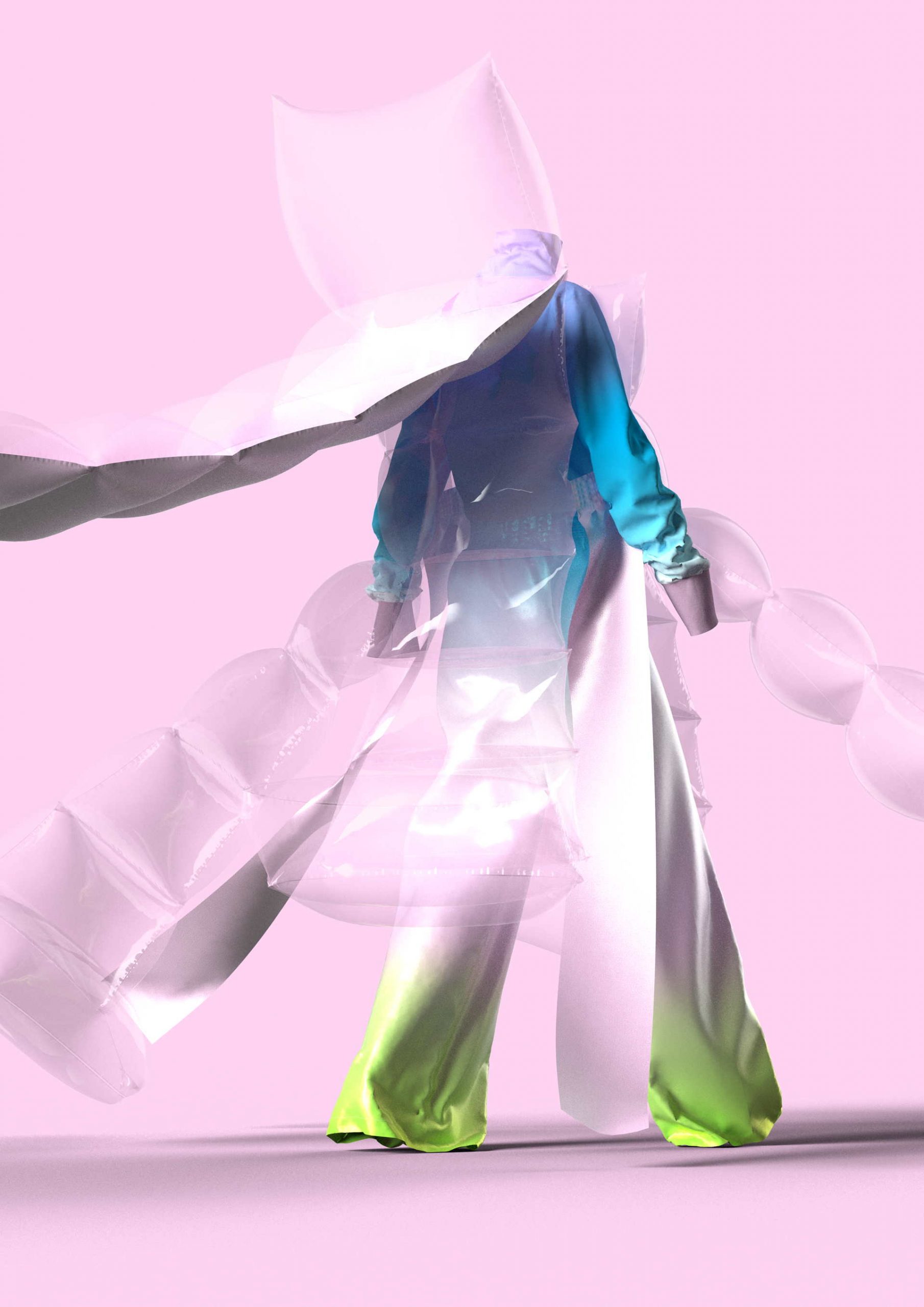
©Diane Wallinger
What are some of the pros and cons of digital design versus traditional design?
For me, the big con of digital fashion is that it lets you create amazing shapes and textures, but that they often cannot exist in reality. I am still attracted, or rather in need of physicality, and when I see an incredible digital garment, I can’t help myself from thinking, “I wish I could wear that,” and I mean physically. It’s a little bit frustrating at times that all that beauty only exists on-screen, but that’s also part of the magic. And apparently, that need for physicality goes away with time and practise, so we’ll see!
There are a lot of pros that I already mentioned, like creative freedom and the capacity to instantly visualise an idea. To me, one of the biggest pros of digital fashion is its sustainable aspect—the gigantic amount of fabric and paper that is saved when designing digitally. But this is a benefit that could be implemented in traditional fashion with the use of digital fashion design software, which is already the case within some companies.
How does the emergence of the digital fashion industry affect the experience of fashion design students and newer designers today?
I feel like most fashion students and young designers show interest in digital fashion. At least, they are curious about it and question its role. It's quite normal, as several graduates and current students had to switch to digital fashion design when we went into lockdown.
I think that the learning of digital fashion design software, and here again I'm thinking of Clo3D, should be integrated into the existing curriculum, rather than creating digital-only fashion courses. For me, it shouldn't replace learning of more traditional design techniques—they are complementary skillsets. Besides, I was introduced to Clo3D and other digital fashion software and tools as part of my MA Fashion Futures at The London College of Fashion and without this introduction, I would probably not be where I am now. I feel like it’s important to at least present this technology to students, even if they don’t decide to pursue that path. And I must say that it’s also easier to make digital garments when you know how to sew them physically.
As for newer designers, I think that the use of digital fashion software and the simplification of the sampling process that it represents could impact the way they decide to produce. If you save time and material when prototyping, you are likelier to invest more money into producing locally. And even if one chose to go ahead with outsourcing, the process's digitalisation would enable fewer exchanges between the factory and head office.
What tools and innovations are you, as digital designer, most looking forward to accessing as the industry continues to develop?
Well, I must say that there are so many existing tools and technologies that I haven’t even tried yet; honestly, I can't answer that question! I feel like I need to have a go at these first before being able to get excited for what's next. I guess that's what happens when you discover a discipline—it's all new, attractive and innovative. It's like being a kid with a new toy and actually, this feels as playful and non-binding.
Your collection, "CARE OF SELF, CARE OF WORLD", invites wearers to partake in fashion that empowers them, so that they can in turn use that energy to better the world. How do you think the digital platform of this collection has enhanced this message?
The digital collection, the result of my MA project at The London College of Fashion, was released during the pandemic at a time when people could only turn to themselves to build the mental strength necessary to face the situation. Individuals used social platforms to maintain relationships and work. They reached to online video content to exercise, meditate or acquire new knowledge. CARE OF SELF, CARE OF WORLD came out with what I call a “fashion-meditation” video series enabling viewers to experience the digital pieces. So essentially, the collection and the visuals were what people were looking for and where they were looking at. Originally, the project is thought to encourage people to take care of themselves, so that they increase their mental resilience towards the psychological challenge of climate change.
I don’t think that the context of the creation and release changed this purpose, but I feel like maybe it increased the collection’s relevance. Suddenly, taking some me-time to face the situation wasn’t only applicable to the climate crisis, but to the pandemic too. Also, I believe that it helped the understanding of the project, that it made it more relatable. People were allowing themselves to stay in bed longer and keep their pj’s on all day, and I was presenting them with daywear satiny pyjamas and cushion-y, duvet-like puffer jackets! CARE OF SELF, CARE OF WORLD was right for its time, and its digital form just made it more accessible at a time when our lives transferred to the virtual world.
+ Words:
Dorice Lee
Luxiders Magazine Contributor

